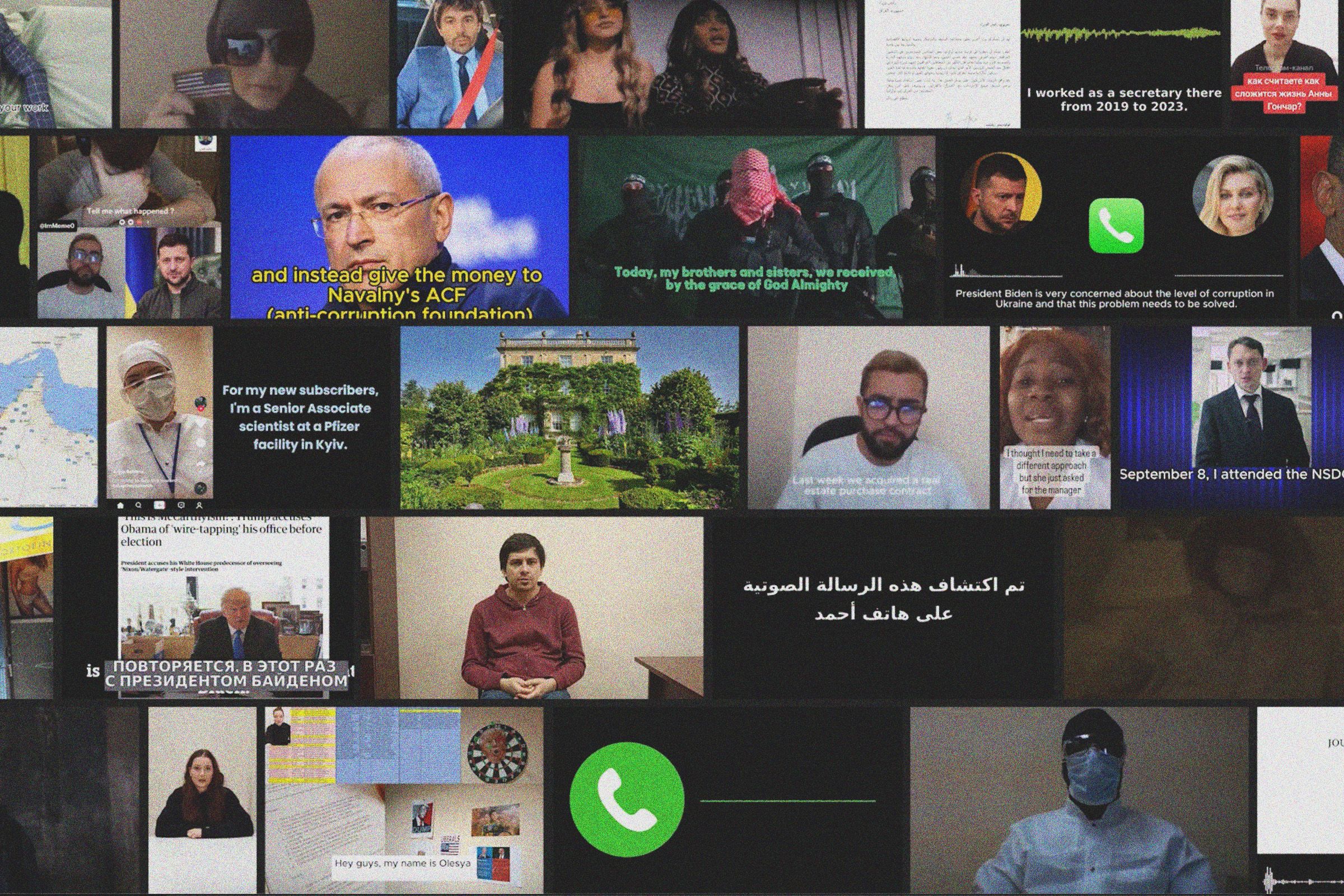Johnson did not return requests for comment. Similar requests to those who spread the false assassination attempt story went mostly unanswered. Those who responded defended their posts and videos.
“We reported it as potentially being a hoax,” Dore said.
Andrew Kolvet, a representative for Kirk and a producer of his podcast, said Kirk noted at the time that it wasn’t possible to verify the claim.
“Frankly we’re glad to know that Ukraine wasn’t orchestrating an assassination attempt against Tucker,” Kolvet said of the former Fox News host. “That’s a good thing.”
Storm-1516’s video production team likely operates out of an office in St. Petersburg and appears to recruit actors from diaspora communities there, researchers at Microsoft said. Based on an analysis of methods and personnel, the researchers believe the group is in part a vestige of the Internet Research Agency, a disinformation factory founded by Yevgeny Prigozhin that meddled in the 2016 U.S. presidential election. Prigozhin, a onetime ally of Russian President Vladimir Putin, led a quickly quashed rebellion against the Russian military in June 2023 and died months later in a plane crash.
Storm-1516 is loosely tied to the Kremlin by people, products and tactics; Microsoft researchers believe it’s directed by the Center for Geopolitical Expertise, an anti-liberal think tank that, according to Estonian intelligence, organized press tours of Ukraine for Western pro-Putin propagandists. The Foundation for Battling Injustice, a former Prigozhin propaganda operation that imitates a human rights organization, has amplified Storm-1516’s fake videos, researchers say.
Other groups have similar goals but different methods. Storm-1099 is known for its “Doppelganger” operation, which uses fake news websites — dozens of which were recently seized by the Justice Department — and a bot network to push disinformation. Storm-1679 trades in feature-length films that mimic American documentaries and political thrillers, including on the Paris Olympics.
Storm-1516’s cheap videos echo Cold War-era propaganda techniques. The most memorable may be the KGB-designed “Operation Denver,” which concocted and spread the false conspiracy theory that the AIDS virus had been engineered by the Pentagon.
A known launderer of KGB disinformation, the Indian newspaper Patriot seeds a lie about AIDS on July 17, 1983. (Archive.org)
A known launderer of KGB disinformation, the Indian newspaper Patriot seeds a lie about AIDS on July 17, 1983. (Archive.org)
That campaign began with a letter from an anonymous but “well-known” scientist with insider information published in 1983 in the Patriot, a pro-Soviet Indian newspaper.
In 2024, Russia’s strategies have evolved, with the creation of more legitimate-looking fake news websites, more sophisticated bot networks and the increasing use of AI. Some of Russia’s disinformation projects are professional productions involving paid actors, while others are slick documentaries with AI-fabricated celebrity hosts. Some target Russian citizens and others the outside world.
The Storm-1516 videos initially relied on real people, like a Cameroonian woman in St. Petersburg who journalists revealed had posed as a Cartier intern in a viral TikTok video falsely smearing Olena Zelenska, the first lady of Ukraine, from October 2023.
In the last few months, the videos have seemingly leaned on AI, hiding the identity of the subject to further thwart fact-checking efforts.
Hany Farid, a professor of digital forensics at the University of California, Berkeley, identified evidence of AI manipulation in a handful of recent Storm-1516 videos, including one from July of a man posing as a luxury car salesman to falsely claim to have sold Zelenska a 4.5-million euro Bugatti sportscar.
Blurry faces, disappearing teeth and tongues, discrepancies between words and mouth shape, and videos in which a subject’s body remains uncomfortably still can all be giveaways, Farid said. Some of the fakes he called “shockingly bad.”
“Could they make better videos? Sure,” Farid said. But “these videos basically work. You don’t have to make Hollywood-style fake videos to get people to start doubting everything.”
One of Storm-1516’s most recent bad fakes showed a purported park ranger describing the illegal killing of an endangered black rhino. Flanked by a Zambian flag and a picture of giraffes, the man says that last year, he accompanied a diplomatic mission on a safari. To his amazement, he says, a woman shot and killed a young rhino named Casuba. “A female American politician. Her name was Kamala.”
The video lacked evidence, but it spread anyway. Through Russian Telegram, into English through a Zimbabwean news website, then “The Intel Drop” and the usual verified propagandists to their hundreds of thousands of followers on X.
The story seemed to stop there. Some posts even acknowledged the video may have strained credulity: “If this is real, she’s in a world of worry,” wrote Chay Bowes, an Irish commentator and contributor to Russian state media network RT, in a since-deleted post.
No matter — maybe the next one would hit.

Leave a Reply